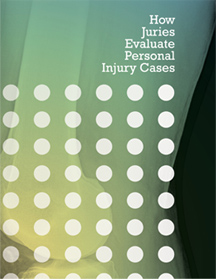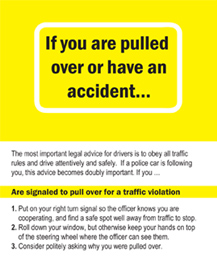Legal elements of a slip and fall case
A slip and fall lawsuit is a legal action to recover compensation for injuries caused by another’s negligence (that is, failure to take reasonable care). In order to prevail in a slip and fall personal injury lawsuit, the injured party (the “plaintiff”) must establish these legal elements:
- Victim
- Hazard
- Injury
- Causation
- Notice
- Duty
These elements are the building blocks in every case. The strength of the proof of each of these elements determines the success of the action.
Victim
Frequently, the only witness to a slip and fall incident is the person who slips and falls. To succeed at trial, the injured plaintiff must be credible. A good personal injury lawyer will explore every detail of the slip and fall accident with the plaintiff, to ensure that the plaintiff’s credibility will not be a problem for the jury.
Hazard
In most cases, some physical feature or condition is a major contributing factor in the plaintiff’s fall. The hazard may be as simple as water on the floor of a supermarket or as complex as a subtle variation in the riser height of a stairway. In each case, however, something caused the plaintiff to fall. Careful consideration of the mechanics of the plaintiff’s fall will usually identify the hazard. On occasion, however, no apparent hazard explains the manner of the fall. In these cases, it is necessary to look at causative factors not associated with the premises, including, for example, the style and state of repair of the plaintiff’s shoes; the plaintiff’s age and mental state at the time of the accident; the plaintiff’s gait and manner of walking; physical disabilities or impairments suffered by the plaintiff, and outside intervening events that could have caused the plaintiff to generate unusual walking or moving forces.
Causal link
Slip and fall accidents that do not result in injury do not result in lawsuits. An injury alone, however, is not sufficient to sustain a lawsuit. There must be a link between the hazard and the injury. Furthermore, there must be a link between the existence of the hazard and some act or failure to act on the part of the defendant (the property owner or occupier who is being sued). When a plaintiff slips on the wet floor and breaks a hip on impact, the issue of the hazard (water on the floor) causing injury (broken hip) is relatively simple to prove. To prove that the hazard was the result of some negligent or careless act of the defendant is more difficult. Whether the defendant owed a duty to the plaintiff, e.g., a duty to inspect, to warn or to repair, is an important part of establishing this causal link. Failure to prove causation will likely be fatal to the plaintiff’s case.
Injury
The injury must be consistent with the plaintiff’s version of the slip and fall accident. For example, assume the plaintiff claims she was walking normally when her feet slid forward and she landed on her knees, breaking her right kneecap. While it is possible for a slip and fall injury to occur in this manner, it is improbable. When a foot slides forward it causes the upper torso to vault backward. If a loss of balance occurs, the impact is usually to the buttocks and hip. Forward falls with a knee impact usually result from a trip over a vertical obstruction during the terminal phase of the stride or when the ball of the foot slips backward during the lift-off phase of the stride. Occasionally, pain and/or embarrassment may cause the plaintiff to forget some facts or events occurring at the time of the fall, or to fixate upon a particular feature or condition, ignoring other important facts surrounding the accident. The totality of the evidence will help to establish both the hazard and causation.
Duty
The law is clear in all of the states that the defendant must have breached a duty of ordinary or reasonable care before the plaintiff can prevail. The level of care is determined by the custom and practice of the industry, by legal code or statute, or by the ease and practicality by which some hazards can be eliminated. In a minority of states, the duty owed to an individual depends upon the individual’s status on the property. Thus, for example, a person invited onto the premises for business purposes is owed a higher duty of care than a trespasser. In the majority of states, however, the defendant’s duty depends upon the foreseeability of injury to the plaintiff, whatever his or her status on the property. Simply stated, if a condition is likely to cause injury, and the condition can be eliminated or the risk of injury reduced by reasonable means, then it is the duty of the owner or occupier of the property to do so.
Notice
Notice is usually the key issue in slip and fall cases. Notice typically requires expert testimony regarding inspection and maintenance practices within the industry. The expert will compare the practices of the landowner to these standard or customary practices. Reasonable property management implies a conscious recognition of a condition likely to cause injury. This recognition creates a duty to inspect the property for conditions that would expose the public to some risk of harm. A failure to inspect may be negligence if the dangerous condition would have been discovered by a reasonable inspection. In effect, a defendant cannot hide his head in the sand to escape liability, claiming lack of knowledge of the hazardous condition.
A defendant may have “actual” notice or “constructive” notice of the potentially harmful condition. Actual notice is established if the defendant knew of the defect and failed to remove it or failed to use other reasonable safeguards to protect the public. Since most people are responsible and will correct obvious hazards, this type of case is rare. Constructive notice is established if the defect should have been discovered through the defendant’s use of ordinary care.
The accident
An experienced personal injury attorney will devote most of his or her time and attention to learning the details of the slip and fall accident. Most of the legal issues in the case – duty, breach, causation and damages – will revolve around the facts developed here.
Date and time of the slip and fall accident
The date and time of the slip and fall accident should be determined as accurately as possible. For example, periodic sweep and inspection procedures are often recorded. It is important to know when the accident occurred relative to the last inspection, sweeping or maintenance. Emergency medical treatment reports or responses also may help in documenting the date and time of the slip and fall. This data can then be compared with the reported times and dates provided by the defendant (the property owner or occupier). A conflict may indicate poor record keeping, faulty memory or more than one similar accident occurring in a short time period. Fall accidents in retail stores and other buildings of public accommodation often occur towards the end of the work shift for attendants, clerks or maintenance employees. During shift changes, inspection or safety procedures may be overlooked by incoming personnel. The exact time of the slip and fall accident compared to the safety and work schedules may prove that the area was not adequately monitored during a critical time.
Location on premises
If the slip and fall was due to a defect or substance on the floor, the location within the store is important. Some portions of a retail store are subject to increased tripping, slipping or falling hazards than others and require more frequent cleaning and inspection procedures. Falls on stairs, ramps, curbs or walkways most often are due to specific surface conditions of the walkway, changes of elevation along the walkway surface or exposure to contiguous conditions, such as planters, signs, etc. Photographs of the site should depict the specific conditions, when possible, and the relative location of the accident site to major features within the store or on the premises.
Falls on stairways present special problems. Since the cause of the fall may be due to excessive variation in tread depths or riser heights, the exact location on the stairway is important. Remember that the usual mode of ascending or descending stairs results in each foot being placed on every other step or tread. The critical dimensions, then, involve at least three contiguous stairs. Therefore, if the slip and fall occurred on the third step from the top, variations in the dimensions of steps one, two, three and four could be substantial contributing factors in the cause of the accident.
Type and condition of walking surface
Many different types of walking surfaces exist, e.g., stairways, sidewalks, floors. The frequency of walkway surface inspection and maintenance is often dependant on the reasonably anticipated and foreseeable use by pedestrians. Those walkways or floors that serve as elements of the exit system from the building or are part of an accessible route into a building of public accommodation are subject to higher standards of maintenance and construction than remote areas of parking lots or garden pathway. The type of walking surface on which the slip and fall occurred should be characterized as carefully as possible.
Material from which the surface is constructed may be an early indication of potential safety hazards. For example, hard, smooth surfaces exposed to water or other liquids are likely to be slippery. Dirt, gravel or other naturally occurring material may not provide even, stable footing. Tile, brick or paving stones may have missing, displaced or broken sections, which could cause a tripping hazard.
The condition of the walkway also is critical. Most clean, dry and even surfaces do not present a safety hazard to the pedestrian. Liquids, including water, are the most common contaminants causing walkway slipping hazards. If liquid was present, it needs to be identified. If this is not possible, then the injured plaintiff should describe the color, appearance (clear, oily, dirty, cloudy, shiny, etc.), area of coverage, and smell of the liquid. Damaged or torn carpets and mats may cause tripping hazards, therefore, the condition, color and placement of mats is important. Broken, uneven or damaged sidewalk and walkways should be described as fully as possible.
Lighting conditions
Building, safety and industry standards limit the minimum amount of light necessary for reasonable safety on exits, sidewalk, and walkway. The time of day is important to determine the amount of available light, shadow patterns, glare and other conditions which could affect the visual acuity of the pedestrian. Missing or nonworking light fixtures also should be noted. Has the lighting condition changed recently or been modified or repaired since the slip and fall accident?



